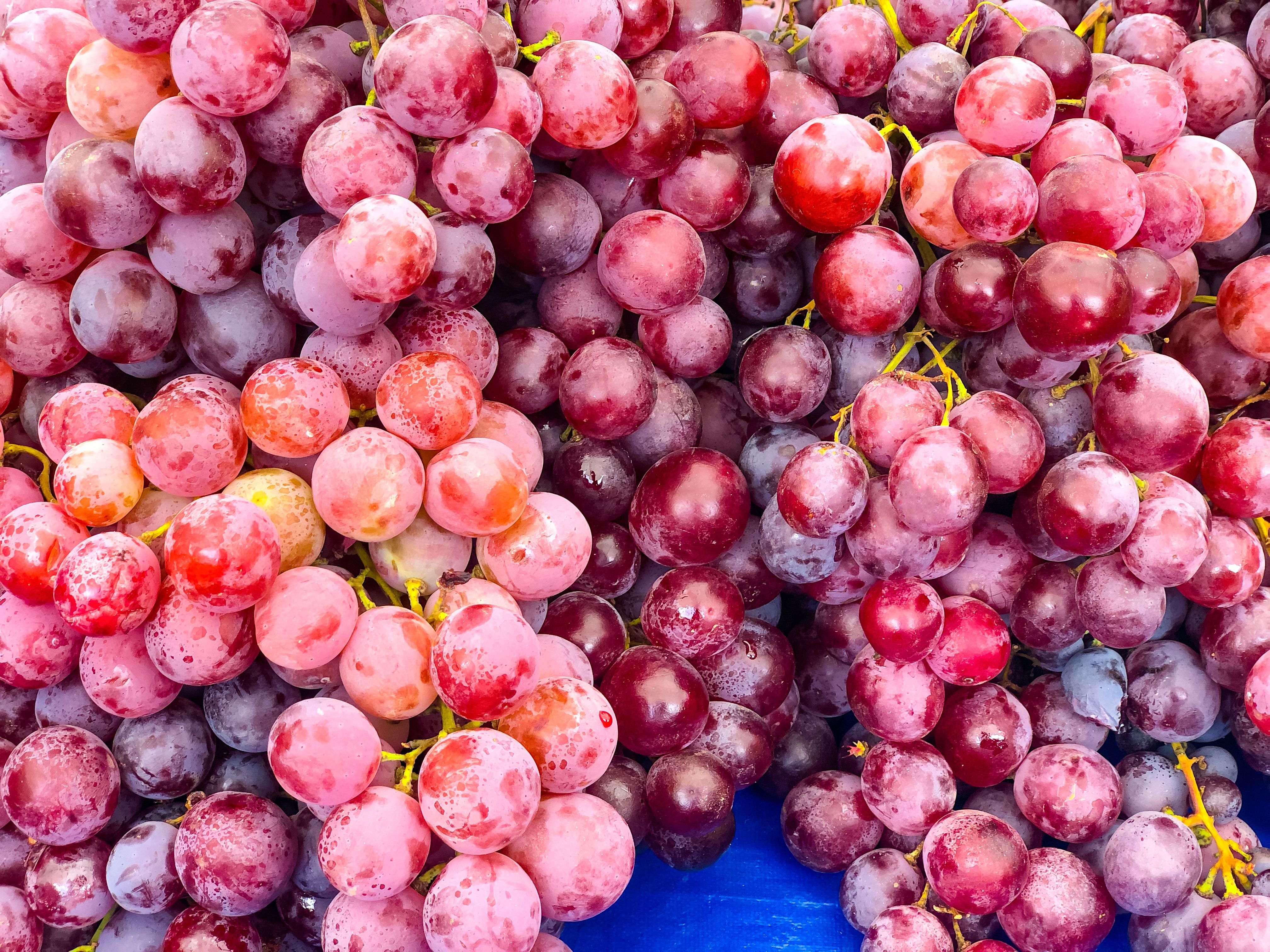Article
Vitis vinifera Red Globe Grape Skin Pigmentation Investigated Using Advanced Techniques
Author(s):
Scientists from multiple institutions have employed advanced techniques to investigate the pigmentation of Vitis vinifera Red Globe grapes. Their findings indicate that cyanidin-3-O-glucoside and peonidin-3-O-glucoside are the primary biomolecules responsible for the vibrant coloration of these grapes.
Researchers from various institutions have collaborated to shed light on the skin pigmentation of the Vitis inifera Red Globe grape (1). By employing advanced scientific techniques, the team aimed to uncover the sources responsible for the grape's striking coloration. Their findings, published in Spectrochimica Acta Part A: Molecular and Biomolecular Spectroscopy, provide valuable insights into the pigmentation of this particular grape variety.
red globe from red and natural grape varieties | Image Credit: © emerald_media - stock.adobe.com

Led by Carlos E. Rufino da Silva, Mauro L. Baesso, and Rodrigo J. da Silva Lima, the study was conducted at the Universidade Federal de Campina Grande in Brazil, Universidade Estadual de Maringá in Brazil, Northern Arizona University in the United States, and the University of Copenhagen in Denmark. The team utilized phase-resolved photoacoustic spectroscopy and time-dependent density functional theory (TDDFT) methods to investigate the grape's skin pigmentation.
In this study on Vitis vinifera Red Globe grapes, phase-resolved photoacoustic spectroscopy was employed to analyze the skin pigmentation of the grapes in their natural state within the visible spectral range of 390 to 700 nm. This allowed the researchers to determine the specific wavelengths at which the grape skin absorbed light, enabling them to identify the key pigmentation sources. TDDFT is a computational approach used to study the electronic structure and optical properties of molecules and materials. In this investigation, TDDFT was used to qualitatively analyze the physical sources of grape pigmentation. By employing TDDFT calculations, the researchers were able to examine the electronic transitions and energies of the relevant biomolecules responsible for the grape's coloration. This theoretical approach served as a valuable complement to the experimental spectroscopic results obtained through phase-resolved photoacoustics, offering a deeper understanding of the molecular mechanisms underlying the pigmentation of the Red Globe grapes.
By measuring the absorption spectrum of the Red Globe grape in its natural form, the team obtained valuable data using the photoacoustic technique. They successfully retrieved the primary pigmentation spectrum by employing the phase-resolved approach. The combination of experimental and theoretical analysis enabled the researchers to make significant discoveries regarding the grape's coloration.
Through their investigations, the team found compelling evidence pointing to the cyanidin-3-O-glucoside and peonidin-3-O-glucoside as the main biomolecules responsible for the Red Globe grape's pigmentation. These findings align with previous studies, further substantiating the role of these compounds in grape coloration.
Understanding the sources of pigmentation in grapes can have implications for various industries, including winemaking and agriculture. These findings contribute to the growing body of knowledge on grape biology and could potentially influence future cultivation practices or inform the development of innovative grape-related products.
As researchers continue to explore the mysteries of nature, investigations like these bring us closer to unraveling the complexities behind the vibrant colors found in the world around us. The collaborative efforts of scientists from different institutions, as demonstrated by this study, serve as a testament to the power of interdisciplinary research in unlocking nature's secrets.
Reference
(1) Rufino da Silva, C.E.; de Oliveira, M.G.; Baesso, M.L.; Agra, K.L.; Filho, J.S.; da Silva Lima, R.J. Vitis vinifera Red Globe grape: In natura investigations on skin pigmentation using phase-resolved photoacoustic and TDDFT methods. Spectrochim. Acta, Part A 2023, 298, 122761. DOI: 10.1016/j.saa.2023.122761
Newsletter
Get essential updates on the latest spectroscopy technologies, regulatory standards, and best practices—subscribe today to Spectroscopy.





